Top 10 Most Popular Wines in the UK
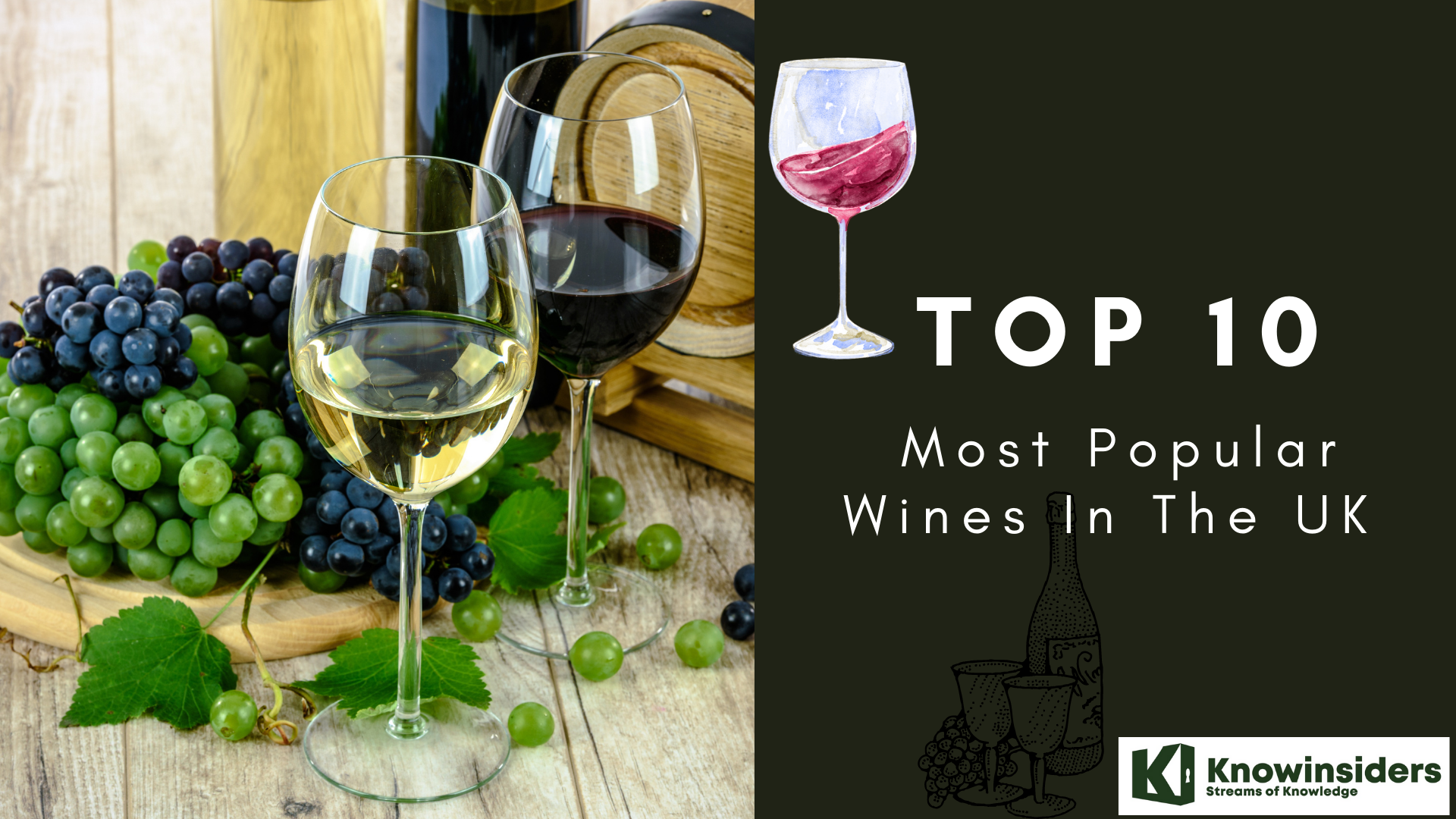 |
| Top 10 Most Popular Wines in the UK |
13.7 million hectoliters of wine were released for consumption by HM Revenue and Customs. For the past fifteen years, the volume cleared for consumption has mostly been stable.
For the entire period under consideration volumes cleared have been over 12.5 million hectoliters. Wine is one of the most famous drinks not only in the UK but in the world, and these are the most popular and well-known wines in this country, according to a new survey (new winemaking simulator game Hundred Days) which looked at the preferences in wine varieties of adults of drinking age.
Wine Consumption in the United Kingdom
Wine is one of the most popular alcoholic drinks in the world. Typically made from fermented grapes, wine has been consumed for thousands of years. Although beer might be the alcohol most associated with the United Kingdom and its pub culture, wine has a strong following.
The global wine market was heavily impacted by the COVID-19 pandemic and the market in the UK was no exception. Revenue in the UK market declined by over 17 percent in 2020 and a further eight percent in 2021. Already trending towards more e-commerce sales, the online sales channel gained nearly three percent in the first year of the pandemic. Unlike revenue, wine production in the UK was not significantly impacted by the pandemic. Volume increased slightly in 2020 to 79,128 hectoliters. Despite lockdowns and the impact on on-trade sales, the number of wineries actually grew in 2020 to 178.
When consumers in the UK purchased a bottle of wine in 2020, they were most likely to choose a still wine. Per capita consumption of still wine reached 15.5 bottles in that year. Wine drinkers spent the most on the Hardys wine brand, which generated sales of 295 million GBP, according to Statista.
List of top 10 most popular wines in the UK
10. Rioja
9. Malbec
8. Zinfandel
7. Pinot Noir
6. Cabernet Sauvignon
5. Rosé
4. Merlot
3. Sauvignon Blanc
2. Chardonnay
1. Pinot Grigio
*****
What Are the Most Popular Wines in the United Kingdom?
10. Rioja
 |
| Photo: AdobeStock |
Rioja is a wine region in Spain, with denominación de origen calificada (D.O.Ca., "Qualified Designation of Origin," the highest category in Spanish wine regulation). Rioja wine is made from grapes grown in the autonomous communities of La Rioja and Navarre, and the Basque province of Álava. Rioja is further subdivided into three zones: Rioja Alta, Rioja Oriental and Rioja Alavesa. Many wines have traditionally blended fruit from all three regions, though there is slow growth in single-zone wines.
The harvesting of wine in La Rioja has an ancient lineage with origins dating back to the Phoenicians and the Celtiberians. The earliest written evidence of the existence of the grape in La Rioja dates to 873, in the form of a document from the Public Notary of San Millán dealing with a donation to the San Andrés de Trepeana (Treviana) Monastery. As was the case in many Mediterranean lands in medieval times, monks were the main practitioners of winemaking in La Rioja and great advocates of its virtues.
Rioja Alta: Located on the western edge of the region and at higher elevations than the other areas, the Rioja Alta is known more for its "old world" style of wine. A higher elevation equates to a shorter growing season, which in turn produces brighter fruit flavors and a wine that is lighter on the palate.
Rioja Alavesa: The region of Rioja Alavesa is in the province of Álava in the Basque Country, on the northern bank of the River Ebro. Despite sharing a similar climate as the Alta region, the Rioja Alavesa produces wines with a fuller body and higher acidity. Vineyards in the area have a low vine density with large spacing between rows. This is due to the relatively poor conditions of the soil with the vines needing more distance from each other and less competition for the nutrients in the surrounding soil.
Rioja Oriental (formerly Rioja Baja): Unlike the more continental climate of the Alta and Alavesa, the Rioja Oriental is strongly influenced by a Mediterranean climate which makes this area the warmest and driest of the Rioja. In the summer months, drought can be a significant viticultural hazard, though since the late 1990s irrigation has been permitted. Temperatures in the summer typically reach 35 °C (95 °F). A number of the vineyards are actually located in nearby Navarra but the wine produced from those grapes belongs to the Rioja appellation. Unlike the typically pale Rioja wine, Oriental wines are very deeply colored and can be highly alcoholic with some wines at 18% alcohol by volume. They typically do not have much acidity or aroma and are generally used as blending components with wines from other parts of the Rioja.
9. Malbec
 |
| Photo: Food & Wine Magazine |
Malbec wine is known for its deep purple color and full body. Malbec grapes are small and dark in color with very thick skins, producing a wine that has rich fruity flavors and medium tannin levels.
Malbec wines are often higher in alcohol than Merlot or Pinot Noir. Some bottles contain up to 15% ABV, so watch out for this boozy bottle if you’re trying to cut down on your alcohol intake.
Malbec grapes are fussy and can be difficult to grow, so they’re grown in much smaller quantities than other more popular red wines. Malbec grapes do well in sunny climates that also have cold nights. High elevation spots are perfect, like the Mendoza wine region nestled in the foothills of the Andes in Argentina.
In Bordeaux, France, Malbec is a popular blending grape. It’s often blended with Cabernet Sauvignon, Cabernet Franc, and Gamay to make Bordeaux blends.
Malbec is synonymous with Argentina. In fact, before Argentina started growing it in the 18th century, Malbec was considered a low-quality grape that was only suitable for blending.
Today the Malbec grape takes up three-quarters of Argentina’s vineyards and is considered their most important grape.
While the Malbec grape originated in France (in the Cahors region), the Argentinian Malbec is the most celebrated. The two taste very different — while an Argentinian bottle is plummy and soft in texture, a French bottle is quite tart and savory.
There are three notable wine regions in Argentina producing the best Malbec:
Mendoza
Salta
San Juan
All of these regions are perfect for growing Malbec grapes, as the vineyards are at high altitudes with plenty of sunshine.
Malbec is still grown in France, mainly in Bordeaux and the Loire Valley, but it does struggle with the cooler climate. In fact, the entire French crop was nearly destroyed in the mid-1950s due to adverse weather conditions, according to Usual Wines.
8. Zinfandel
 |
| Photo: Food & Wine Magazine |
Domestication of Vitis vinifera grape occurred before winemaking was discovered! After the vine was tamed in 6000 BCE in the Caucasus region, the grapes spread to the Mediterranean and notably Croatia. This movement subsequently built the wine industry in the 19th century. The Italians first called Zinfandel “Primitivo” to describe the grape’s tendency to ripen earlier than others, and first documented its relevance in the 1870s. The first shipment of Zinfandel to the United States was in 1797 from the Imperial Nursery in Vienna, Austria originally from Croatia. In the 1850s, nurserymen joined the Gold Rush and took off to California with Zinfandel in hand. The prominence of Zinfandel in California and the world has manifested ever since.
Zinfandel is an especially bold wine compared to other Reds. Every bottle has unique spicy notes, so pairing your favorite Zinfandel with its parallel spice is the way to go.
Make sure to try spicy foods with your Zinfandel, ranging from tangy barbecue to curry. Lighter meats are also a treat, such as a quail and pork. Some beautiful herbs that bring out the Zinfandel flavor are ginger, garlic, rosemary, curry, turmeric, cayenne, clove, nutmeg, cinnamon, vanilla, cocoa, black pepper, coriander, fennel, and saffron. Opposite to the lighter meats are hard and richly flavored cheeses including manchego and cheddar. Pungent and heart vegetables are also an excellent pairing, ones like roasted tomatoes, red peppers, caramelized onions, and roasted squash, according to Wine Insiders.
7. Pinot Noir
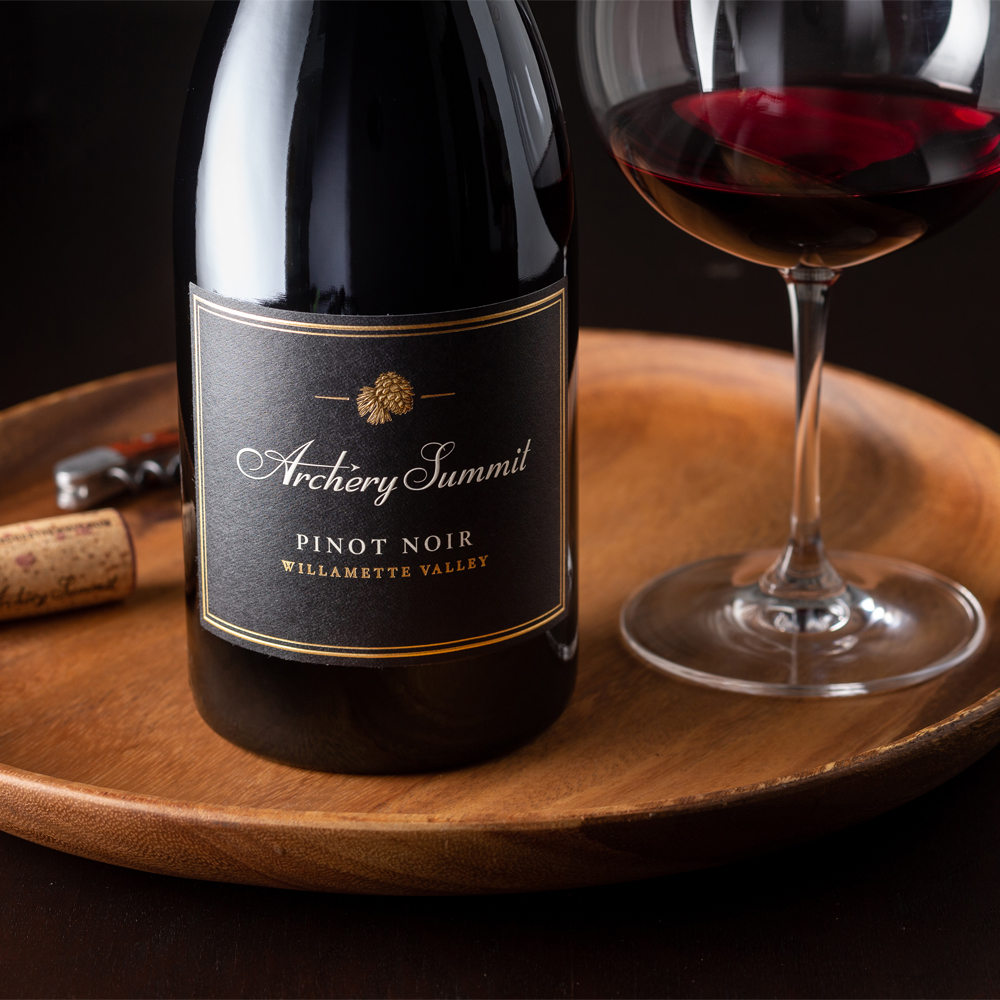 |
| Photo: Archery Summit |
Pinot noir is a red wine grape variety of the species Vitis vinifera. The name may also refer to wines created predominantly from Pinot noir grapes. The name is derived from the French words for pine and black. The word pine alludes to the grape variety having tightly clustered, pine cone-shaped bunches of fruit.
Pinot noir grapes are grown around the world, mostly in the cooler climates, and the grape is chiefly associated with the Burgundy region of France. Pinot noir is now used to make red wines around the world, as well as Champagne, sparkling white wines such as the Italian Franciacorta, and English sparkling wines. Regions that have gained a reputation for red Pinot noir wines include the Willamette Valley of Oregon; the Carneros, Central Coast, Sonoma Coast, and Russian River AVAs of California; the Elgin and Walker Bay wine regions of South Africa; the Mornington Peninsula, Adelaide Hills, Great Southern, Tasmania, and Yarra Valley in Australia; and the Central Otago, Martinborough, and Marlborough wine regions of New Zealand. Pinot noir is the most-planted varietal (38%) used in sparkling wine production in Champagne and other wine regions.
Pinot noir is a difficult variety to cultivate and transform into wine. The grape's tendency to produce tightly packed clusters makes it susceptible to several viticultural hazards involving rot that require diligent canopy management. The thin skins and low levels of phenolic compounds lends pinot to producing mostly lightly colored, medium-bodied and low-tannin wines that can often go through phases of uneven and unpredictable aging. When young, wines made from Pinot noir tend to have red fruit aromas of cherries, raspberries, and strawberries. As the wine ages pinot has the potential to develop more vegetal and "barnyard" aromas that can contribute to the complexity of the wine.
Read More: Top 5 Most Popular Wines in the World
6. Cabernet Sauvignon
 |
| Photo: Jordan Vineyard & Winery |
Cabernet Sauvignon is one of the world's most widely recognized red wine grape varieties. It is grown in nearly every major wine-producing country among a diverse spectrum of climates from Australia and British Columbia, Canada to Lebanon's Beqaa Valley. Cabernet Sauvignon became internationally recognized through its prominence in Bordeaux wines where it is often blended with Merlot and Cabernet Franc. From France and Spain, the grape spread across Europe and to the New World where it found new homes in places like California's Santa Cruz Mountains, Paso Robles, Napa Valley, New Zealand's Hawke's Bay, South Africa's Stellenbosch region, Australia's Margaret River, McLaren Vale and Coonawarra regions, and Chile's Maipo Valley and Colchagua.
The classic profile of Cabernet Sauvignon tends to be full-bodied wines with high tannins and noticeable acidity that contributes to the wine's aging potential. In cooler climates, Cabernet Sauvignon tends to produce wines with blackcurrant notes that can be accompanied by green bell pepper notes, mint and cedar which will all become more pronounced as the wine ages. In more moderate climates the black currant notes are often seen with black cherry and black olive notes while in very hot climates the currant flavors can veer towards the over-ripe and "jammy" side. In parts of Australia, particularly the Coonawarra wine region of South Australia, Cabernet Sauvignon wines tend to have characteristic eucalyptus or menthol notes.
5. Rosé
 |
| Photo: Virgin Wines |
Rosé is not a specific type of grape — it's simply a genre of wine, like reds and whites. While it’s produced similarly to other red wines, the time it ferments with grape skins is cut shorter. This reduced skin contact is what gives rosé its signature pink color.
Rosé can be made from any red grape and cultivated in any wine region. Although it has become a recent favorite in the United States, it has been a mainstay in France for centuries, with the region of Provence pumping out more rosé than any other style of wine. It’s also quite popular in Spain (where it’s called rosado) and Italy (rosato).
This rosy wine is usually a blend, meaning it can be made from a variety of grapes. The most common types of red wine grapes used to make rosé are grenache, sangiovese, syrah, mourvèdre, carignan, cinsault, and pinot noir. In some cases, it can be a single varietal made with one type of grape. In California, rosés are known to be single varietal and made with 100% pinot noir grapes.
Rosé is a winner when it comes to food pairings. Best known for its al fresco-friendly sipping style, this blush wine pairs well with almost everything, including spicy foods, sushi, salads, barbecued meats, roasts, and rich sauces, according to Usual Wines.
4. Merlot
 |
| Photo: Josh Cellars |
Merlot is a dark blue-colored wine grape variety, that is used as both a blending grape and for varietal wines. The name Merlot is thought to be a diminutive of merle, the French name for the blackbird, probably a reference to the color of the grape. Its softness and "fleshiness", combined with its earlier ripening, makes Merlot a popular grape for blending with the sterner, later-ripening Cabernet Sauvignon, which tends to be higher in tannin.
Along with Cabernet Sauvignon, Cabernet Franc, Malbec, and Petit Verdot, Merlot is one of the primary grapes used in Bordeaux wine, and it is the most widely planted grape in the Bordeaux wine regions. Merlot is also one of the most popular red wine varietals in many markets.
While Merlot is made across the globe, there tend to be two main styles. The "International style" favored by many New World wine regions tends to emphasize late harvesting to gain physiological ripeness and produce inky, purple-colored wines that are full in body with high alcohol and lush, velvety tannins with intense, plum and blackberry fruit. While this international style is practiced by many Bordeaux wine producers, the traditional "Bordeaux style" of Merlot involves harvesting Merlot earlier to maintain acidity and producing more medium-bodied wines with moderate alcohol levels that have fresh, red fruit flavors (raspberries, strawberries) and potentially leafy, vegetal notes.
3. Sauvignon Blanc
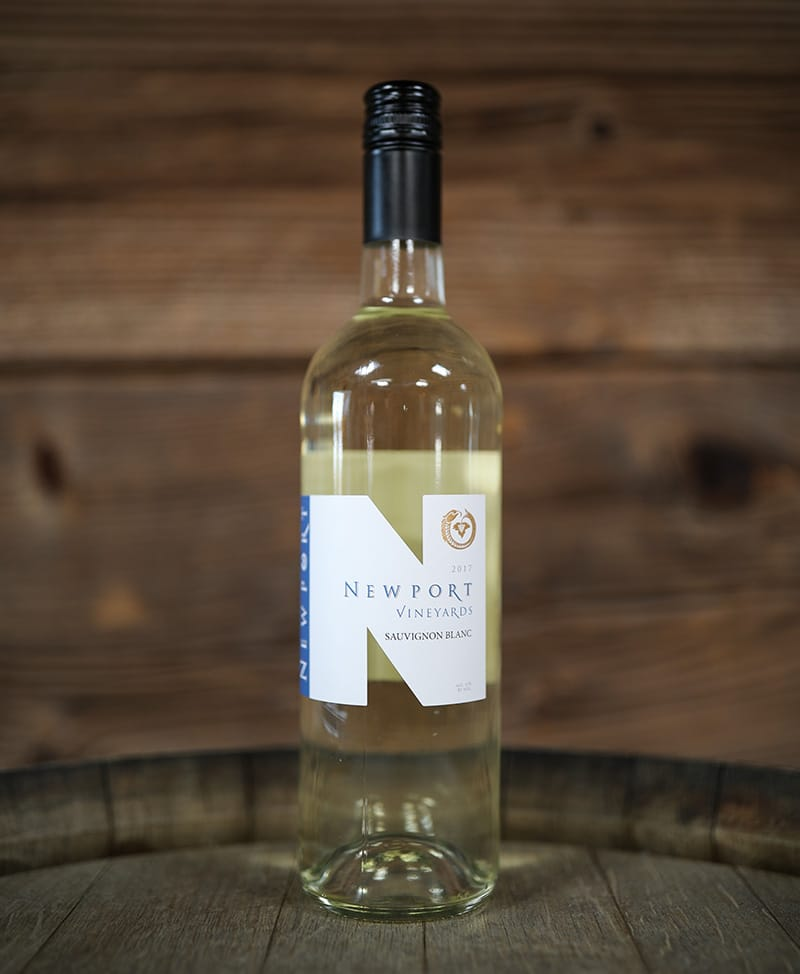 |
| Photo: Newport Vineyards |
Sauvignon blanc is a green-skinned grape variety that originates from the Bordeaux region of France. The grape most likely gets its name from the French words Sauvage ("wild") and blanc ("white") due to its early origins as an indigenous grape in South West France.
Wine experts have used the phrase "crisp, elegant, and fresh" as a favorable description of Sauvignon blanc from the Loire Valley and New Zealand. Sauvignon blanc, when slightly chilled, pairs well with fish or cheese, particularly chèvre. It is also known as one of the few wines that can pair well with sushi.
Along with Riesling, Sauvignon blanc was one of the first fine wines to be bottled with a screwcap in commercial quantities, especially by New Zealand producers. The wine is usually consumed young and does not particularly benefit from aging, as varietal Sauvignon blancs tend to develop vegetal aromas reminiscent of peas and asparagus with extended aging. Dry and sweet white Bordeaux, including oak-aged examples from Pessac-Léognan and Graves, as well as some Loire wines from Pouilly-Fumé and Sancerre are some of the few examples of Sauvignon blancs with aging potential.
2. Chardonnay
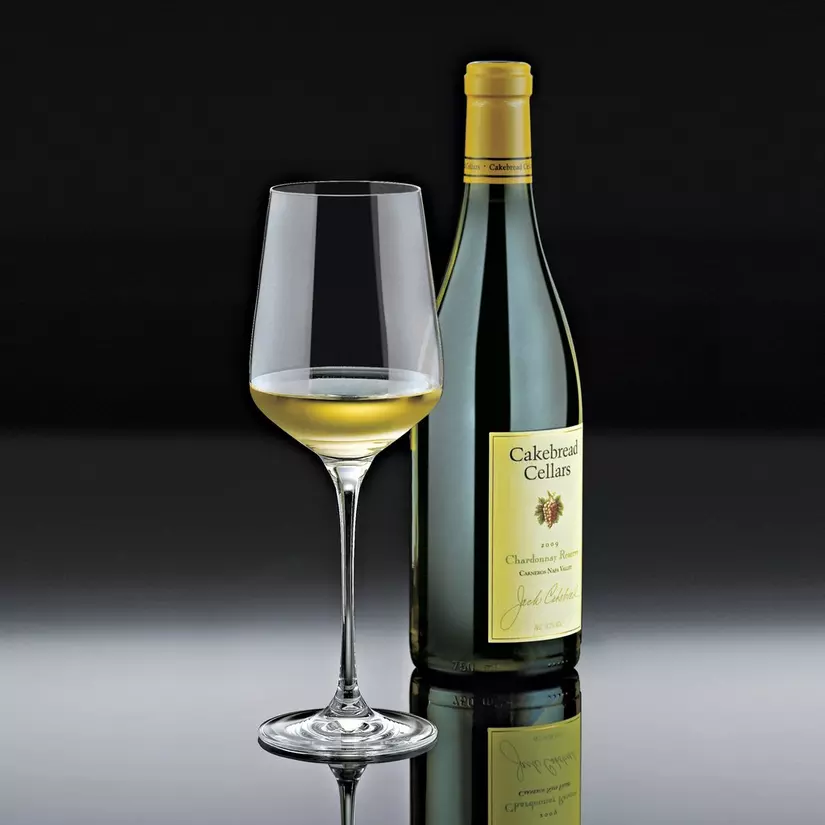 |
| Photo: Wine Enthusiast |
The most famous vine variety of all. So powerful is the C-word on a wine label that, like Cabernet Sauvignon, Chardonnay has virtually no synonyms – although in Styria in southern Austria some winemakers persist with the tradition of calling it Morillon. In the 1980s something extremely important to the history of wine happened: 'Chardonnay' became a name more familiar to the world's wine buyers than any of the geographically-named wines this vine variety had for centuries produced, such as Chablis, Corton-Charlemagne, or Montrachet. When the emerging New World wine industries introduced varietal labeling – calling wines by the name of their principal grape variety – it was Chardonnay that made the most friends.
All over the world, producing Chardonnay has been seen as a rite of passage in new wine regions. Almost any wine producer with ambitions to belong to the great international club of wine grown-ups has to prove that he or she can make a Chardonnay, preferably a Chardonnay fermented and matured in new(ish) oak barrels the Burgundian way, with the best of them. The fact is that most of this sort of wine is far more a product made in the cellar than in the vineyard. Or, to put it another way, skilfully-made barrel-fermented Chardonnays tend to taste very much the same wherever they are made. Indeed when many people say they like the taste of Chardonnay, what they often mean is that they like the taste of oak, or at least the qualities of oak maturation.
The Chardonnay vine is nothing if not adaptable. Commercially acceptable Chardonnay can be produced in really quite hot wine regions such as the hot interiors of California, South Africa, and Australia where clever winemaking can give it tropical fruit flavors and even some suggestions of oakiness, often using oak chips. In cooler wine regions such as Chablis, Carneros, and Tasmania, on the other hand, it can produce apple-crisp juice which, in less ripe years, can have rapier-like acidity. The best examples can benefit from five or even more years in bottle to soften that acidity and develop rounder flavors to balance it – although less concentrated examples produced in cool years may simply taste even leaner as the bloom of youth fades. Excluding premier cru and grand cru burgundy, Chardonnay does not make wines for seriously long aging, according to Jancis Robinson.
1. Pinot Grigio
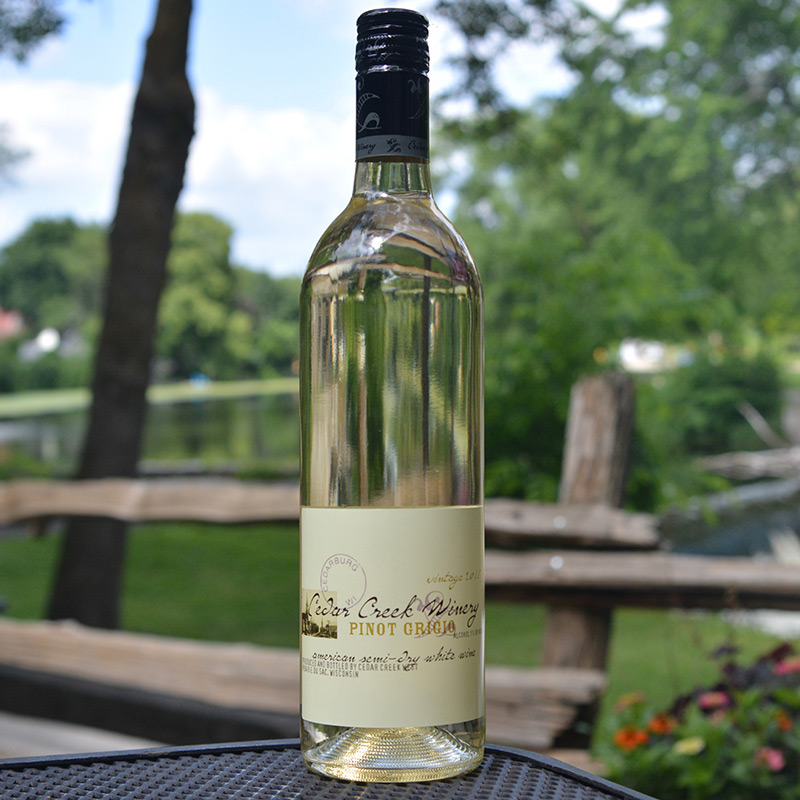 |
| Photo: Cedar Creek Winery |
Pinot gris, pinot grigio or Grauburgunder is a white wine grape variety of the species Vitis vinifera. Thought to be a mutant clone of the pinot noir variety, it normally has a grayish-blue fruit, accounting for its name but the grapes can have a brownish pink to black and even white appearance. The word pinot could have been given to it because the grapes grow in small pine cone-shaped clusters. The wines produced from this grape also vary in color from a deep golden yellow to copper and even a light shade of pink, and it is one of the more popular grapes for skin-contact wine.
Pinot gris is grown around the globe with the "spicy" full-bodied Alsatian and lighter-bodied, more acidic Italian styles being most widely recognized. The Alsatian style, often duplicated in New World wine regions such as Marlborough, Tasmania, South Australia, Washington, Oregon and South Africa tends to have moderate to low acidity, higher alcohol levels and an almost "oily" texture that contributes to the full-bodied nature of the wine. The flavors can range from ripe tropical fruit notes of melon and mango to some botrytis-influenced flavors. In Italy, Pinot grigio grapes are often harvested early to retain the refreshing acidity and minimize some of the overt-fruitiness of the variety, creating a more neutral flavor profile. This style is often imitated in other Old World wine regions, such as Germany where the grape is known as Ruländer or more commonly Grauburgunder.
 Top 10 Most Expensive And Famous Guitars In The World Top 10 Most Expensive And Famous Guitars In The World What are the most famous and expensive guitars in the world? How much is the most expensive guitar in the world? Let's explore! |
 Top 10 Largest Private Companies in The United States Top 10 Largest Private Companies in The United States Check out this article to know what are the 10 largest private companies in America based on its revenues in the most recent fiscal year. |
 Top 10 Most Beautiful Castles In Scotland Top 10 Most Beautiful Castles In Scotland Scotland is home to amazing castles. Let's explore the land of castles with Top 10 Most Beautiful Castles In Scotland. |
 Top 10 Most Beautiful Places In The World To Visit In Your Lifetime Top 10 Most Beautiful Places In The World To Visit In Your Lifetime There are amazing places in the world that you should visit once in your life. Where are they? Let’s plan a trip. |


























